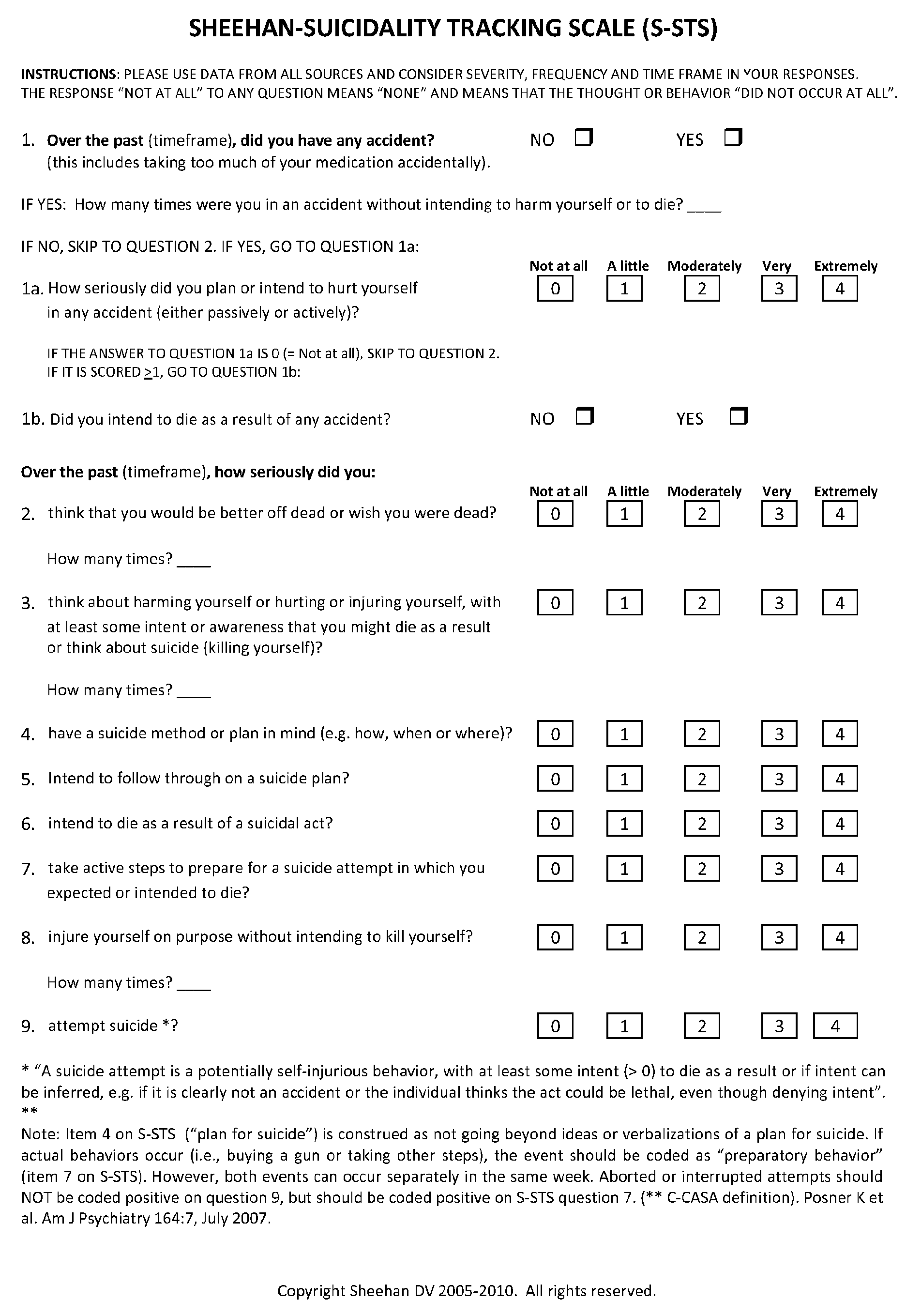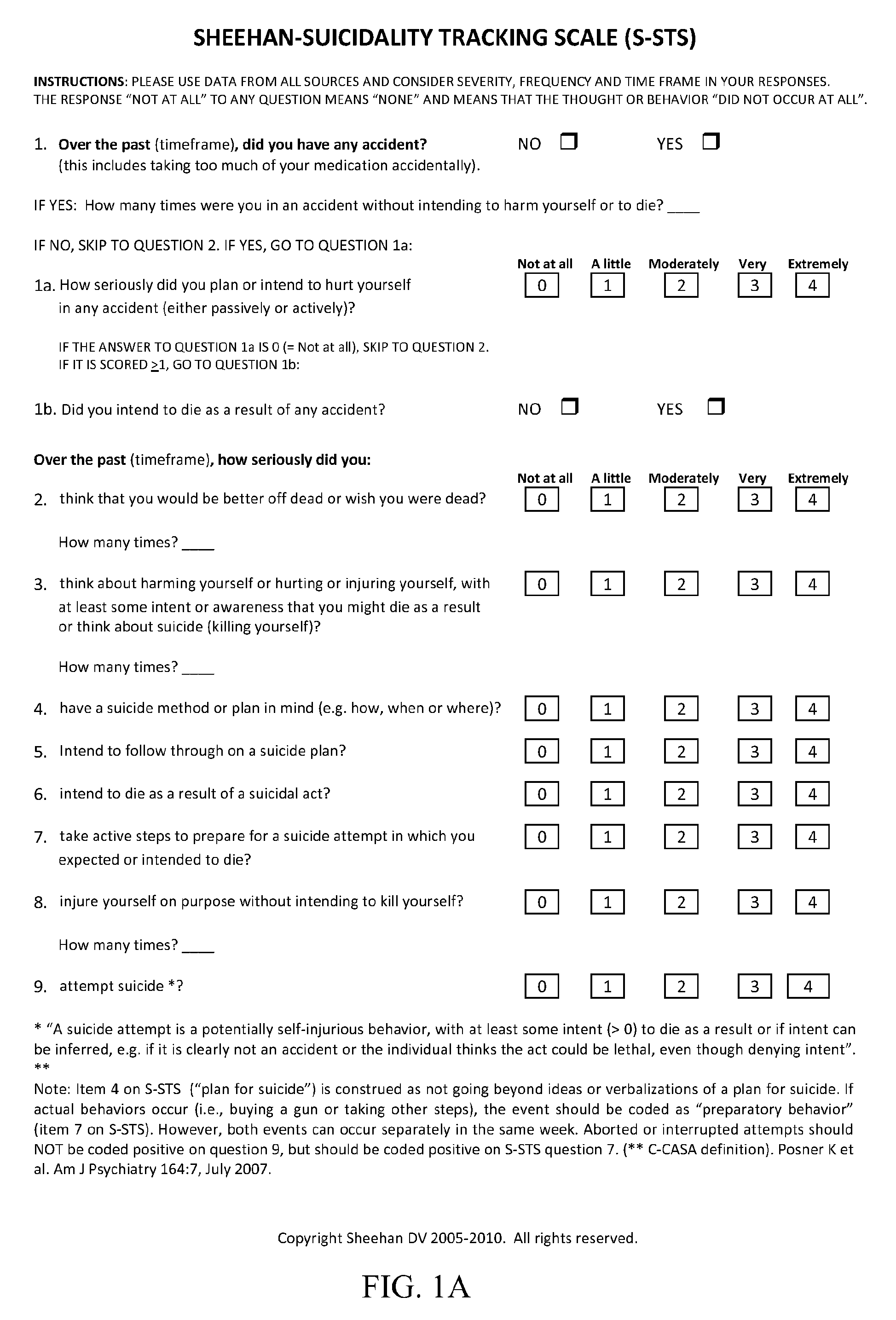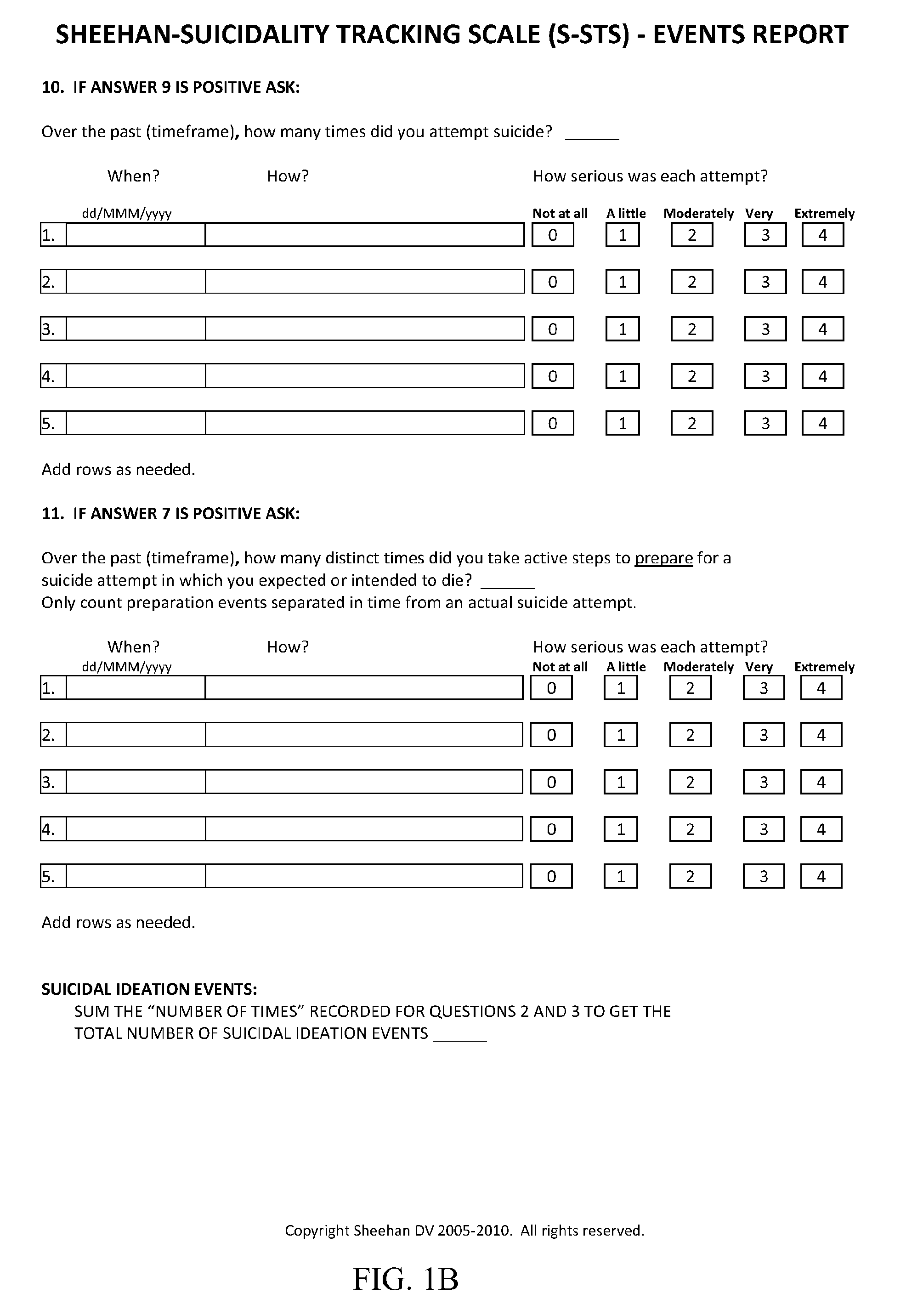Treatment of suicidal ideation or behavior using inhibitors of nicotinic acetylcholine receptors
a technology of nicotinic acetylcholine and inhibitors, which is applied in the direction of biocide, drug composition, instruments, etc., can solve the problems of increasing the risk of suicidality relative to other treatments, smoking is associated with an increased risk of suicidality, etc., and achieves the effects of reducing suicidality, and increasing the risk of suicidality
- Summary
- Abstract
- Description
- Claims
- Application Information
AI Technical Summary
Benefits of technology
Problems solved by technology
Method used
Image
Examples
example 1
General Directions and Scoring Instructions for Sheehan-Suicidality Tracking Scale (S-STS)
[0115]The S-STS is shown in FIGS. 1A-1C. The C-CASA mapping procedure is shown in FIG. 2. Scoring instructions for the S-STS of FIGS. 1A-1C are provided below.[0116]Use data from all sources.[0117]The S-STS can be patient rated and clinician administered.[0118]Consider severity, frequency and time frame in your responses.[0119]Different timeframes may be used with this scale (e.g., “in the past week”, “in the past month”, “since the last visit”, or “ever”). However each study should adopt a consistent time throughout the study, if the scale is to be used as an outcome measure. If it is used as a safety data capture system only, then “since the last visit” is the most appropriate time frame to use.
[0120]All clinicians using this scale in clinical trials should receive instruction using approved training materials for S-STS. This is to ensure consistency in the understanding and application of de...
example 2
The Treatment of Suicidality in Bipolar Disorder and Major Depressive Disorder: A Randomized, Double-Blind, Placebo-Controlled Study of Quetiapine XR Monotherapy and Lithium Monotherapy
[0170]The specific aim of this study is to evaluate the efficacy of quetiapine monotherapy and lithium monotherapy in comparison to placebo in the treatment of suicidality in ambulatory Bipolar Disorder and Major Depressive Disorder.
Concerns in a Suicide Study
[0171]The two main concerns in doing a study on suicidality are how to manage safety and how to measure efficacy. Both concerns need to be addressed in a manner that is sensitive to effects, comprehensive and scientifically credible. Each of these concerns is addressed in detail in the two sections below.
How to Manage the Safety Concerns in a Suicide Study
[0172]Almost all placebo controlled studies for the past 30 years in major depressive disorder and bipolar depression have allowed the inclusion of patients with suicidal ideation and some suici...
example 3
The Treatment of Suicidality in Bipolar Disorder and Schizophrenia: A Randomized, Double-Blind, Placebo-Controlled Study of Asenapine Monotherapy
[0350]The specific aim of this study is to evaluate the efficacy of asenapine monotherapy in comparison to placebo in the treatment of suicidality in ambulatory Bipolar Disorder and Schizophrenia.
[0351]Asenapine is a pharmacological agent recently approved by the US Food and Drug Administration for the treatment of bipolar disorder and schizophrenia. Asenapine is characterized by high affinity for an ensemble of serotonergic, dopaminergic, and a-adrenergic receptors but it has no appreciable affinity for muscarinic cholinergic receptors. Several trials had been conducted assessing the efficacy, safety and tolerability of asenapine in the treatment of bipolar 1 with manic and mixed symptoms including approximately 1300 subjects. In these trials asenapine showed rapid and significant advantage compared to placebo in acute use. Asenapine also ...
PUM
| Property | Measurement | Unit |
|---|---|---|
| concentration | aaaaa | aaaaa |
| anxiety disorder | aaaaa | aaaaa |
| stress disorder | aaaaa | aaaaa |
Abstract
Description
Claims
Application Information
 Login to View More
Login to View More - R&D
- Intellectual Property
- Life Sciences
- Materials
- Tech Scout
- Unparalleled Data Quality
- Higher Quality Content
- 60% Fewer Hallucinations
Browse by: Latest US Patents, China's latest patents, Technical Efficacy Thesaurus, Application Domain, Technology Topic, Popular Technical Reports.
© 2025 PatSnap. All rights reserved.Legal|Privacy policy|Modern Slavery Act Transparency Statement|Sitemap|About US| Contact US: help@patsnap.com



